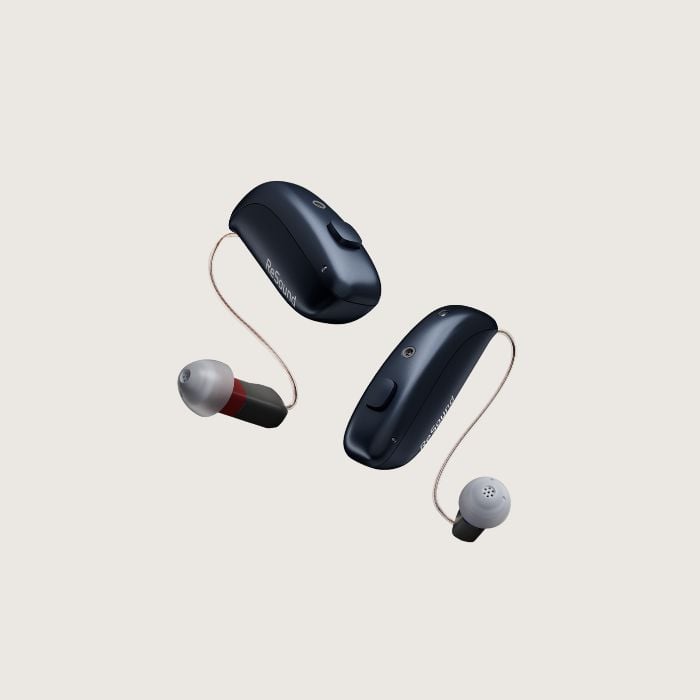Music makes life more enjoyable. Whether it’s a live concert, in the car, or as background noise, music is a way to lift your mood, relax, meditate, and practice self-care.
As an audiologist, I have met many patients who are either musicians or enjoy music and experience hearing loss. Patients commonly express their love for music and its essential role—they want to continue enjoying music, but hearing loss poses a challenge.
This is where hearing aids come in. After all, these devices can significantly affect the quality of life of people with hearing loss. Keep scrolling and I’ll provide tips to optimize your music experience and review the best hearing aids for musicians.
In this article, get the intel on the music listening experience, plus a close look at hearing aids and their ability to process sound and music.
What We Considered in Selecting the Best Hearing Aids for Music
- Wide Dynamic Range: Allows for more realistic sound output.
- Processing Speed: Ensures a lifelike recreation of live music.
- Fitting and Style: Impacts overall music experience.
- Built-In Programming Capabilities: Enables customization with music programs.
- 50+ hearing aid brands reviewed and rated by our team of hearing aid wearers and audiologists
- 200+ hours each month spent researching brands and care options
- 2,000,000 people shopped on Soundly in 2024
- 100% independently owned and operated
Read more about our company, services and process here.
Featured in this article
1. Widex Smart RIC
Widex is a top hearing aid choice among musicians. The Widex Moment Sheer achieves its natural sound quality through its Zero Delay and Pure Sound technology. In addition, it is pared down, which speeds up the processing of the hearing aid to deliver a less distorted and smoother, more authentic sound quality.
Read More About Widex Smart RIC
Widex Allure
- Full-featured prescription hearing
- Strong tinnitus management features
- Lowest-delay sound processing
The Widex Allure is the latest flagship receiver-in-canal device from the brand, released in early 2025. It stands out in several key ways.
- First, Allure offers the lowest sound delay on the market—by a significant margin. For years, Widex has focused on delivering sound from the environment to the ear as quickly as possible, creating a natural listening experience that many users appreciate. With Allure, sound reaches your ears at least twice as fast as the nearest competitor.
- Traditionally, Widex has been sparing with sound management features, but the newly architected chip inside Allure brings more advanced sound processing capabilities than ever before.
- Additionally, Widex devices are highly regarded for their tinnitus treatment programs. Allure continues this tradition with well-reviewed onboard options that give audiologists flexibility for fine-tuning and personalization.
Overall, the Widex Allure is well-respected among audiologists and hearing experts. To purchase this device, you'll need to consult with a local clinic.
- Focused on sound quality, delivering clear sound with the lowest delay in the industry.
- Includes industry leading tinnitus features.
- Widex Allure hearing aids come with rechargeable batteries and Bluetooth streaming capabilities.
- Only sold through local clinics. Remote adjustments require an additional accessory.
- Widex offers a premium product at a premium price that may be out of budget for some.
- Less advanced smartphone app
- Widex Allure is a fully customizable, prescription hearing aid appropriate for mild-severe hearing loss
- If you have severe hearing loss, your care provider may fit you with a custom earmold to reduce feedback
- If you have profound hearing loss, you may be a better fit for a high-powered BTE style (currently available in Widex's previous generation, Widex Moment)
- Widex Allure is a prescription device fit and programmed by a professional
- Widex RemoteLink neck loop is required for remote follow-up programming (requires registering in the hearing clinic's software)
- Widex has the fastest processing time among all major hearing aid manufacturers
- Widex is a favorite choice of musicians and audiophiles
- Allure includes new sound-processing features to improve background noise performance
- Widex Allure comes in in a comfortable receiver-in-canal style that is easy to wear all day
- Widex Allure is among the smallest receiver in canal devices on the marekt
- Sits behind the ear with a receiver (speaker) that reaches into the ear canal
- Choose between ten color options, including neutral colors (black, grey, silver, various skin-tone shades)
- Widex Allure only comes with rechargeable batteries
- Get 27 hours on a 4-hour full charge (without streaming)
- Widex Allure supports Bluetooth LE Audio for next-gen streaming and improved battery performance
- iPhone users can enjoy hands-free calling; Android users get ASHA streaming with compatible devices
- Streaming is more stable thanks to a dedicated compressor that separates media and environmental sounds
- Allure is Auracast-ready, pending a future firmware update
- Widex Allure is relatively easy to handle, though like all behind-the-ear styles, it requires placing the device behind the ear and inserting the receiver into the ear canal.
- Allure features a redesigned push button for convenient volume and program adjustments on the go.
- Widex Allure is water resistant with an IP rating of 68
- This hearing aid can withstand dust and water submersion in one meter of water for up to 30 minutes
- Remote care: Allure fittings and adjustments must be done in-person or using a special neckloop accessory
- Customization: Adjust volume, programs, directionality, and sound profile using the Allure app; includes AI Quick and Sound Assistants
- Tinnitus masking: Available through your hearing care professional or the Widex ZEN program in the Allure app
- Find my hearing aid: Yes – built-in app feature shows last known location and Bluetooth proximity
- Health tracking: Not available
2. GN ReSound NEXIA
With the natural placement of the M&RIE receiver in the ear canal, GN ReSound offers an excellent option for those who appreciate music. In addition, their technology provides a wide dynamic range and many customization options for your hearing healthcare professional to adjust and tweak your settings. The GN ReSound app is also user-friendly and allows you to change settings.
Read More about ReSound NEXIA
ReSound Vivia
- ReSound Vivia is a market leader in AI-powered sound processing
- Vivia is one of the smallest RIC hearing aids available
- Auracast-enabled for seamless Bluetooth streaming, developed in collaboration with Bluetooth SIG
- Impressive 20-30 hour battery life on a single charge - even with AI features enabled
- Custom prescription programming provided by a local audiologist
ReSound Vivia is ReSound’s most advanced prescription hearing aid yet—engineered for natural sound, effortless streaming, and top-tier comfort. Here’s what makes it stand out:
- AI-Sound Processing: Vivia features ReSound’s newest 6th-generation chip and a new AI-powered sound management system that helps in loud environments like restaurants or group conversations. Vivia also supports Auracast for future-ready audio streaming in public spaces.
- Design Notes: Vivia is one of the smallest RICs on the market and sits comfortably behind the ear—comfortable even for glasses wearers. It comes in several colors to match hair or skin tone and is built to withstand sweat and water (IP68-rated).
- All-Day Battery Life: Rechargeable models offer up to 30 hours on a single charge and come with a convienient portable charging case. This length of battery life is impressive given the powerful new AI features onboard.
If you’re looking for a small, high-performance hearing aid with cutting-edge AI features, ReSound Vivia is one of the best available today.
Read more reviews via our partners at ZipHearing.
- Noticeable Improvement Over Previous Devices
Many customers say Vivia is a significant upgrade from earlier ReSound models like the Linx Quattro or older analog hearing aids. - Exceptional Sound Clarity
Multiple reviewers highlight Vivia’s ability to deliver natural, nuanced sound and make conversations easier to understand—even in noisy environments. - Great for First-Time or Returning Users
Some users returned to ReSound after years away and found the Vivia to be intuitive, effective, and worth the switch. - Comfortable and Discreet
Wearers appreciate the small size, subtle design, and comfortable fit—even with glasses. - Mixed Feedback on Music and Sound Environments
One reviewer noted that music listening and sound handling in restaurants were still challenging, though they acknowledged the technology may be better suited for different types of hearing loss.
- Great for background noise management
- Auracast compatible
- Small form factor and an optional 3rd microphone in the ear
- 30-hours of battery life
- More expensive compared to direct to consumer and OTC options
- Vivia's in-ear M&RIE microphone is a bit larger and can be uncomfortable for some
- ReSound Vivia is a fully customizable, prescription hearing aid appropriate for mild-severe hearing loss
- If you have severe hearing loss, your care provider may fit you with a custom earmold to reduce feedback
- If you have profound hearing loss, you may be a better fit for ReSound high-powered BTE
- ReSound Vivia is a prescription device fit and programmed by a professional
- After an initial fitting, you can connect with your care provider remotely through the ReSound app
- ReSound Vivia is an excellent choice for background noise management. The new onboard AI chip is focused on increasing clarity in the toughest listening settings
- Vivia uses a combination of beam forming microphones and noise reduction algorithms to single out speech in complex noise environments
- ReSound Vivia is a discreet and comfortable product, but some users with smaller ear canals find the M&RIE receiver uncomfortable in their ears. M&RIE can be removed by your care provider and replaced with a standard receiver.
- ReSound Vivia hearing aids sit behind the ear
- Vivia is one of the smallest behind-the-ear style devices on the market. Vivia's size is particularly impressive given the new dual-chip architecture and strong battery life.
- Vivia comes in a wide range of colors, including new Navy Blue and Red options.
- Vivia comes with three battery options, including micro RIE rechargeable (30 hours), a larger disposable battery version (size 13), and a second disposable battery option (size 312).
- A rechargeable version of Vivia is also available with a CROS (for single-sided deafness)
- Vivia is one of the first hearing aids on the market to release Auracast-compatible hearing aids. Auracast will take a few years to roll out in public spaces. Still, once it is available, it will allow users to stream public announcements, movies, and other shared audio experiences directly to their hearing aids.
- Of course, Vivia also allows standard Bluetooth streaming from iPhone and Android devices. iPhone users can take calls hands-free, while Android users must keep their phones close to pick up outbound audio.
- Vivia uses Apple's MFI connection and Android's ASHA connection to stream content through Bluetooth
- Vivia is reasonably easy to handle but does require the wearer to place the hearing aid behind their ear and insert the receiver into the ear (consistent across all behind-the-ear styles)
- Vivia's recharging cases use conduction charging, which is easier to handle
- Vivia has an app feature that uses your phone camera to check that the hearing aids are in the ear properly
- ReSound Vivia is water resistant with an IP rating of 68
- This hearing aid can withstand dust and water submersion in one meter of water for up to 30 minutes
- Remote care: After an in-office activation, the remote care option is available on the app
- Customization: Volume control, treble/bass, streaming treble/bass, programs
- Tinnitus masking: Customizable programs with a hearing care professional or use the Resound Relief app to experiment with masking noise
- Find my hearing aid: Yes, feature is included in the app
- Check my fit: An app feature from Resound to check the hearing aids are in the ear properly
Read our full review of the ReSound App here.
3. Oticon Intent
Oticon’s mild, mellow sound quality is another favorite among musicians. A higher technology level also allows finer frequency band adjustments so that settings can be adjusted and fine-tuned to meet your music needs and preferences.
Read More About Oticon Intent
Oticon Intent
- Advanced four-sensor system tailors sound to your environment for a natural listening experience
- Professionally programmed in-clinic for personalized fit and optimal performance
- Bluetooth LE-ready for future-proofed streaming, including upcoming Auracast functionality
- Sleek, behind-the-ear design in Oticon's smallest form factor for a discreet, comfortable fit
Oticon Intent is one of the most popular hearing aids in the U.S., second only to Phonak, and offers a few standout features.
- First, its wide range of advanced sensors intelligently adapts to different environments, making it excellent at handling background noise. This advanced noise management puts Oticon in a race with just a few brands for the best sound management.
- Second, Oticon Intent’s devices are professionally programmed, providing highly customizable settings tailored to the user's unique hearing profile.
- Oticon Intent offers Bluetooth streaming from iPhone and Android and the ability to use Auracast when it is more widely available.
This combination of popularity, intelligent sound processing, and precise, in-clinic programming makes Oticon Intent one of the best on the market at this time.
Oticon Intent reviews are nearly all positive with most users reporting clear sound and strong underlying performance. Lower than 5-star ratings typically come down to ongoing challenges hearing in tough environments. A few sample reviews from our partners at ZipHearing:
- "I've had these Oticon Intent hearing aids for a couple of weeks now, replacing Phonak Audio Lumity hearing aids. My impression is that I am hearing sibilant sounds slightly better and hearing conversations in restaurants slightly better. Even slight gains mean a lot to me. I have moderate hearing loss in the upper registers (normal in the lower). Anything that improves comprehension is welcome. In addition, the design of these hearing aids makes them more comfortable for me than the Phonaks and I wear them all the time without noticing that they are in except very occasionally feeling a little itching in the left ear, which goes away if I take out the hearing aid for a moment and rub the area. I would recommend these hearing aids to others." - John
- "Certainly like the change of hearing clarity. Very simple to use without making adjustments due to background noises or audiences. Very comfortable and no feedback. Glad I moved forward with Oticon Intent." - David
- "These hearing aids are great for me. I am able to hear with no problem at all. they are just as good or better than another brand that I tried that cost over 3 thousand dollars more. they are doing fine and I use them everywhere. I am outside most of the time and they do fine by staying in and not having to worry about them falling out or getting knocked out of my ear." - Stephen
- "I have been wearing HA for over 10 years. Experience with COSCO and others. Although these took some getting used to, my conversational hearing has greatly improved. My husband and friends have noticed without my asking. Still have to get used to the sound of my own voice - which is strange to me - but patience prevails. The music setting works pretty well such that I have resumed playing piano - which I had abandoned. This was an unexpected element in my hearing impaired world! While no hearing aids can provide total hearing correction, I no longer feel isolated in conversational situations. Thank you to the engineers at Oticon!" - Arlene
- Well balanced and intuitive sound processing
- Bluetooth streaming from Android and Apple devices
- Offered with both rechargeable and disposable batteries
- Oticon Intent hearing aids start at $2,898 and can cost as much as $7,000 with walk in care
- Oticon Intent hearing aids require a visit to an in person audiologist and are not sold online
- Oticon Intent is a fully customizable, prescription hearing aid appropriate for mild-severe hearing loss
- If you have severe hearing loss, your care provider can fit you with a custom earmold to reduce feedback
- If you have profound hearing loss, you may be a better fit for Oticon Xceed
- Oticon Intent is a prescription device fit and programmed by a professional
- After an initial fitting, you can connect with your care provider remotely through the Oticon app
- Oticon Intent comes with a new, smarter operating system. Intent uses Oticon's Deep Neural Network to sort background noise from speech. Many users describe Oticon's sound quality as "relaxed", "natural" and "comfortable."
- The new 4D sensors give a customized listening experience for the user, and potentially enhanced clarity and balance.
- Oticon Intent is a very comfortable product with a wide-variety of possible earmolds, domes, and fits. Oticon Intent sits behind your ear with a receiver (speaker) inside the ear.
- Oticon Intent hearing aids sit behind the ear
- Oticon's smallest RIC hearing aid to date
- Intent comes in 9 colors including chroma beige, silver grey, silver, terracotta, chestnut brown, steel grey, diamond black, olive green, and sky blue
- Intent is only availabe in a rechargeable battery option at the moment.
- The rechargeable version of Oticon Intent gets 20 hours of power on a single 2-hour charge, even with streaming.
- Oticon Intent allows Bluetooth streaming, music listening, and phone calls across all models. iPhone users can take calls hands-free, and compatible Android users will also enjoy hands free calls.
- Oticon Intent uses Bluetooth LE and is Auracast-capable
- Oticon Intent is reasonably easy to handle but does require the wearer to place the hearing aid behind their ear and insert the receiver into the ear (consistent across all behind-the-ear styles)
- Single push button
- Oticon Intent is water resistant with an IP rating of 68
- This hearing aid can withstand dust and water submersion in one meter of water for up to 30 minutes
- Remote care: included in the new Oticon Companion app
- Customization: volume, program change, streaming sound quality (treble/bass), SpeechBooster
- Tinnitus masking: your hearing care provider can create a tinnitus masking program
- Find my hearing aid: available in the app
- Health tracking: not available
How Hearing Aids Work

Regarding sound processing, hearing aids amplify speech sounds and other environmental sounds.
How hearing aids work:
- The sounds are picked up by the hearing aid microphones, which send electronic signals to the processor.
- The processor appropriately enhances the signals for hearing loss and sends them to the speakers, where they are delivered to the ear canal.
- The key to hearing aids’ effectiveness is the sound processing algorithms that are built into the device.
How Hearing Aids Process Speech
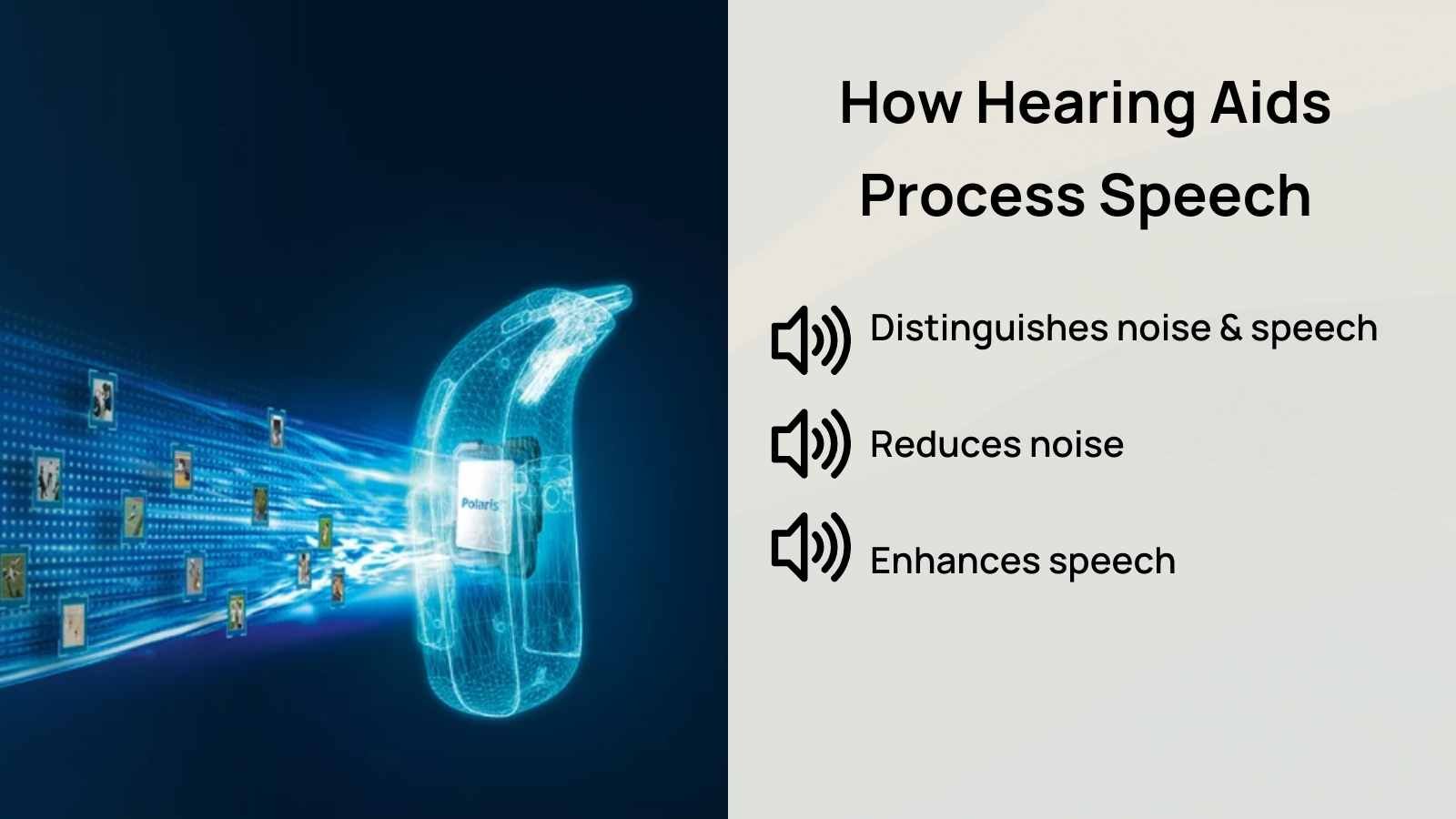
The primary purpose of a hearing aid is to improve speech audibility.
What the hearing aid does with the sounds it picks up depends on two factors:
- The type of sound
- The volume of the sound
More specifically, the hearing aid distinguishes noise and speech, reducing noise while enhancing speech.
The goal of the hearing aid is to amplify soft and normal conversational speech adequately while providing minimal amplification to loud speech. Based on your audiogram, the hearing aid applies frequency-specific volume to provide the volume that you need.
How Hearing Aids Process Music

Essentially, music is approached the same as other sounds by hearing aid processing.
The hearing aid’s primary goal is to amplify speech; however, sound processing to optimize speech may conflict with optimal settings for music listening.
For example, the hearing aid behaves differently with soft than loud speech sounds (e.g., soft sounds are amplified more than loud sounds).
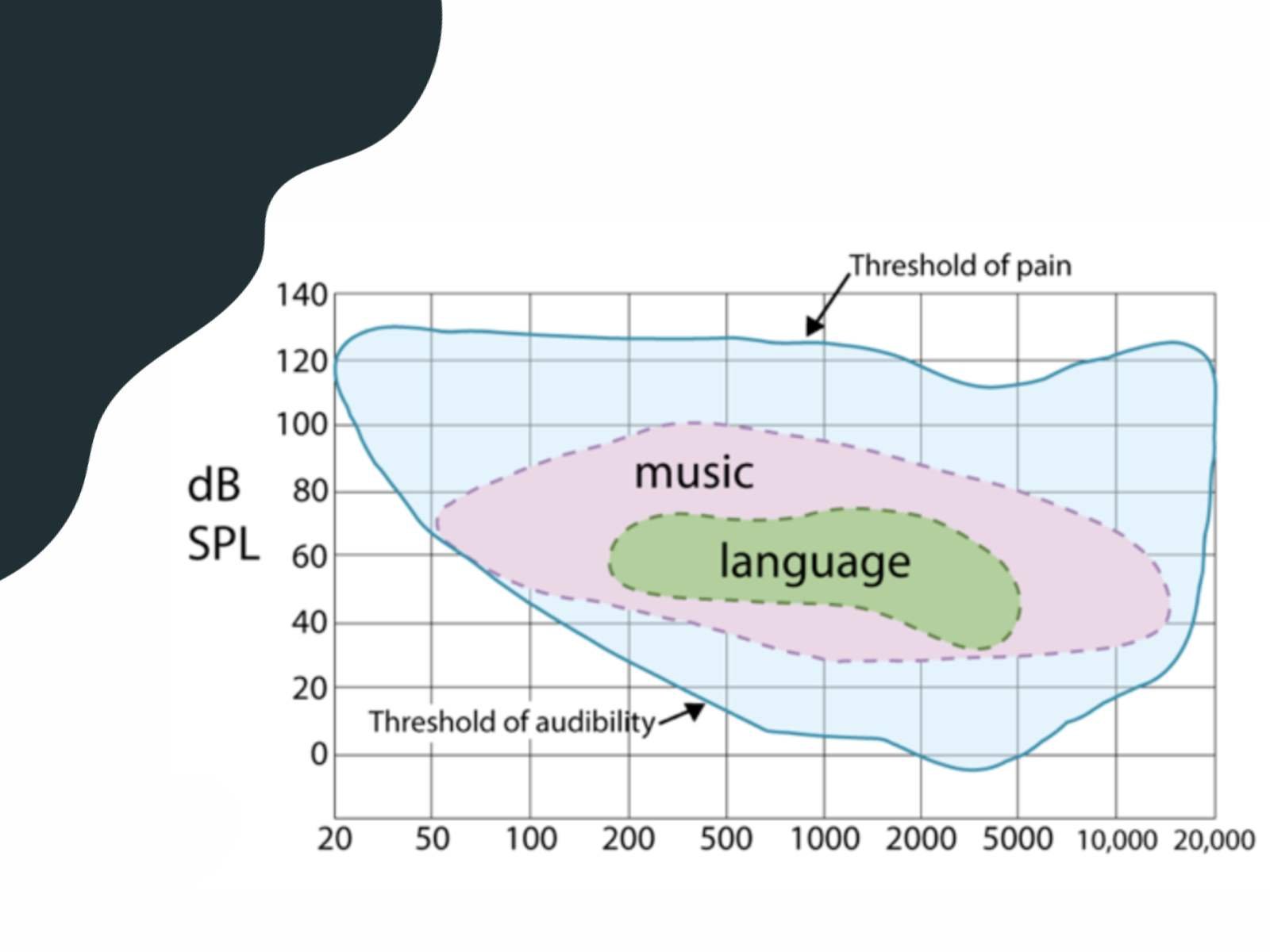
Music contains a wide range of volumes, a wider range of frequencies, variety of sounds and may or may not include speech or lyrics. Sounds that are typically “noise” in another setting might be a desired part of the music.
For example, the hearing aid often reduces a sudden, loud impulse noise (i.e., door slam), but that sudden volume change may be a desired part of the music you’re listening to.
Therefore, enjoying live music requires appropriate settings to preserve the fidelity of the sound. So what is an audiophile to do? Fortunately, there are plenty of options for music lovers and high fidelity sound enthusiasts.
Music Programs and Fine-Tuning
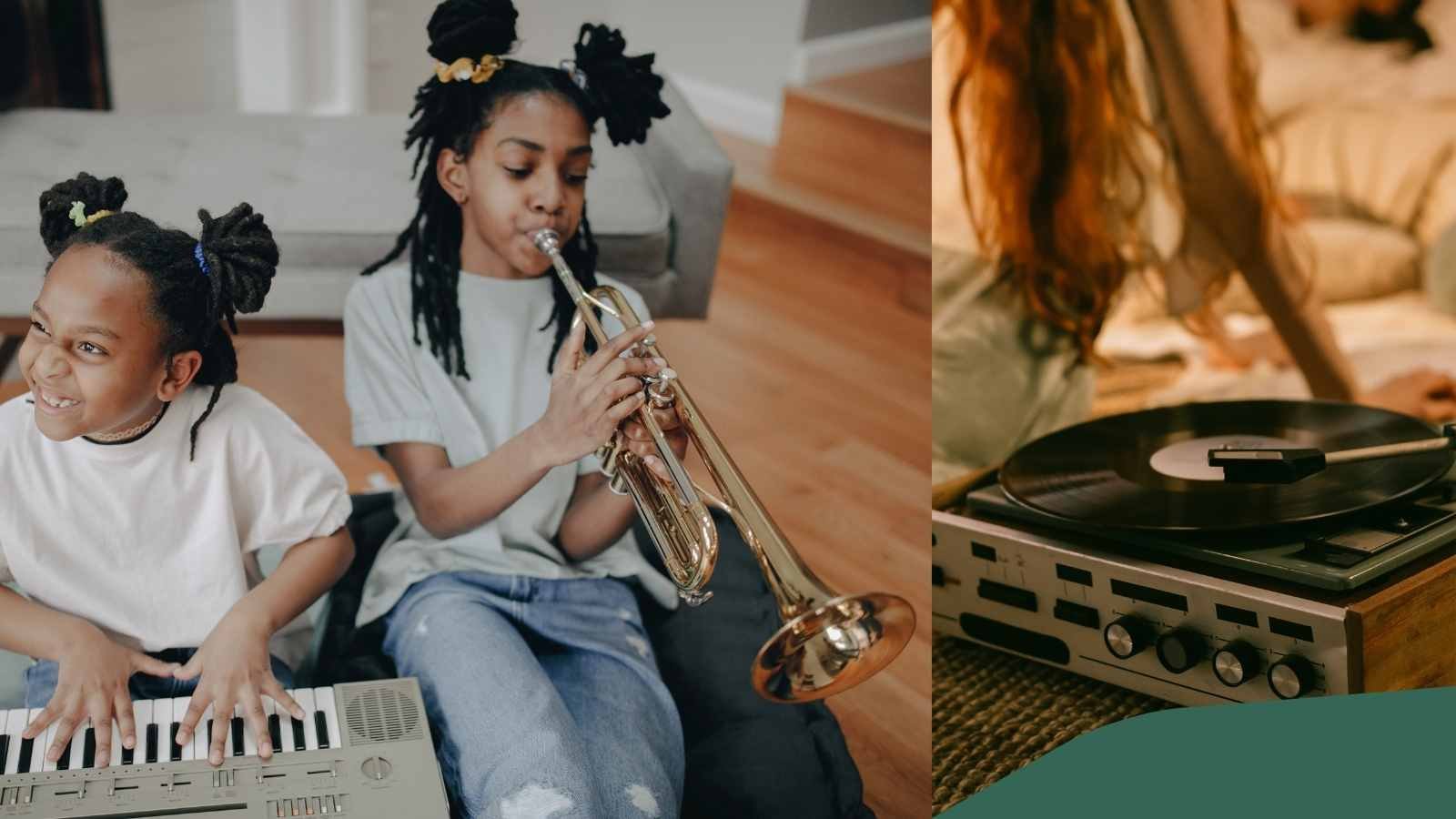
Music programs and fine-tuning can significantly improve the quality of music through hearing aids.
Are you a musician? Fine-tuning for your instrument can help improve sound quality.
Many hearing aids have music programs specifically designed to adjust the device to allow sound to come through with less distortion to the music’s sound quality.
For example, a music program disengages noise reduction programs, directional microphones, and frequency-lowering features. As music incorporates sounds that hearing aids may classify as “noise,” disengaging features, such as noise reduction, will help preserve the fidelity of the music.
To note, hearing aids are often programmed to enhance higher-frequency speech sounds. So that means depending on your instrument, the target frequency region may differ from the hearing aid’s default settings.
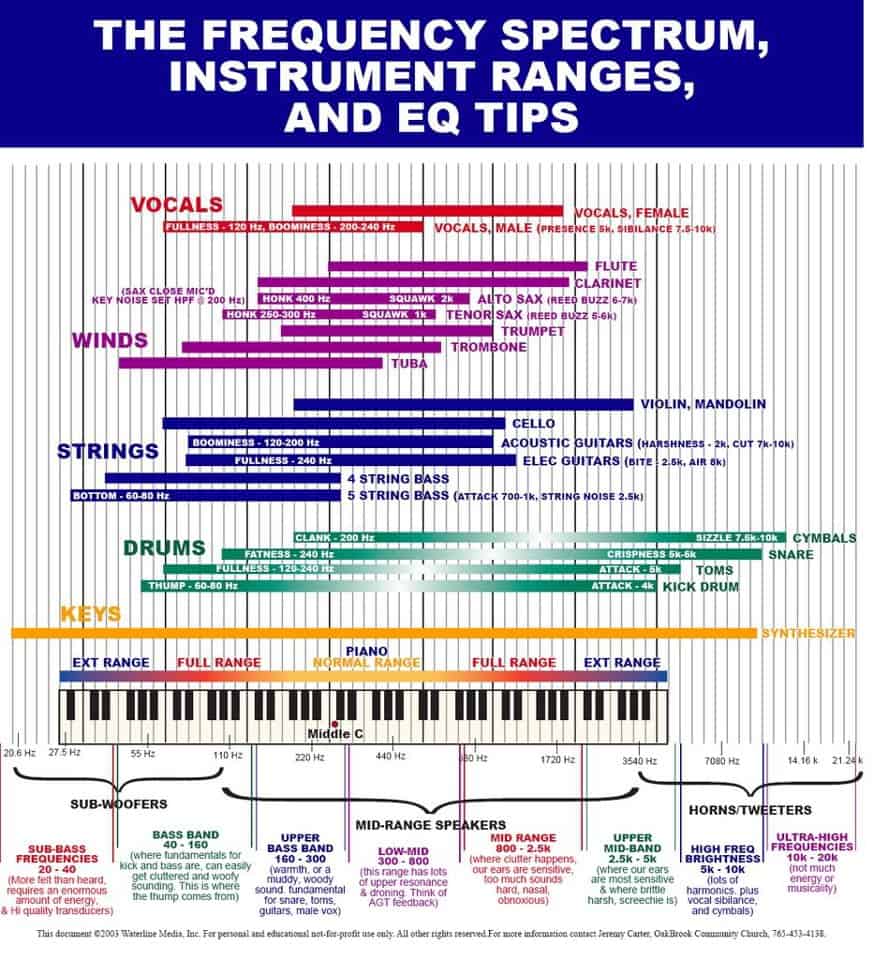
Final Thoughts
Hearing aids can significantly affect the quality of music and sound for people with hearing loss. The key is to choose a hearing aid that meets your needs and fine-tune the music program to your preferences.
It is also essential to communicate with your hearing healthcare professional about your music needs and preferences. If you’re looking for more resources, try our Live Listen feature to hear sound quality from different hearing aid options.




